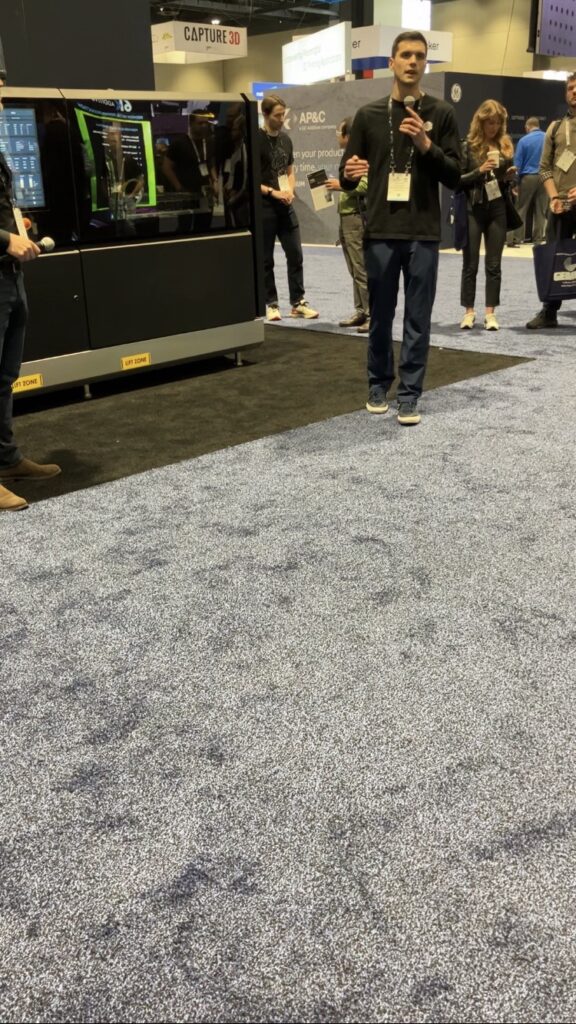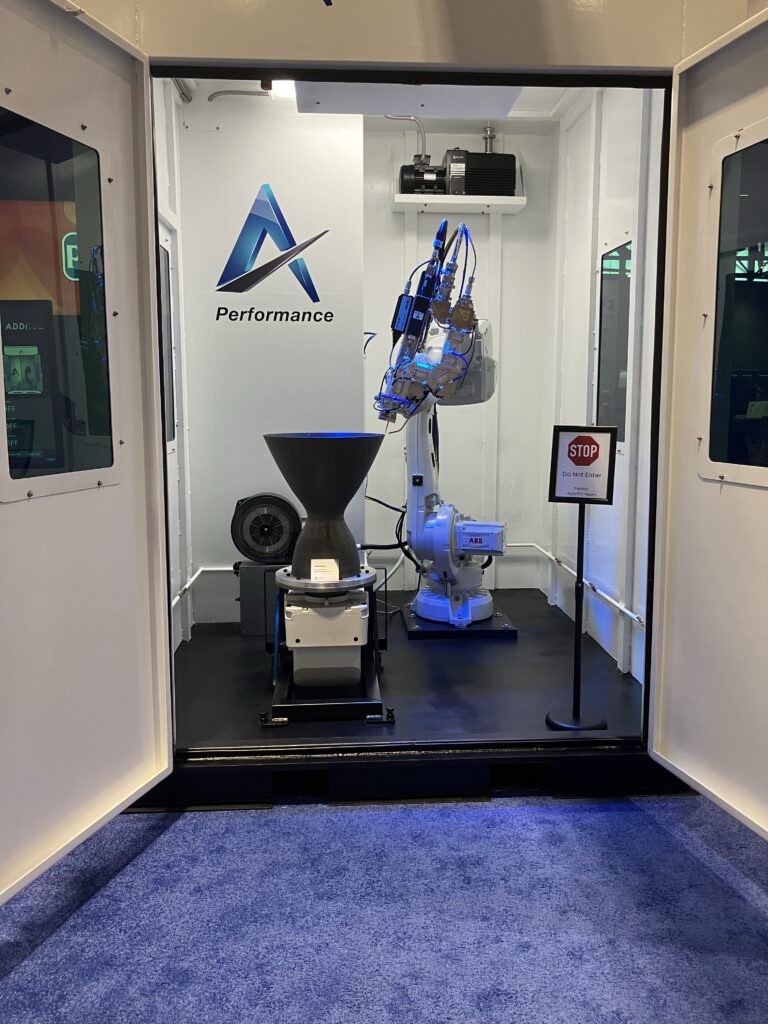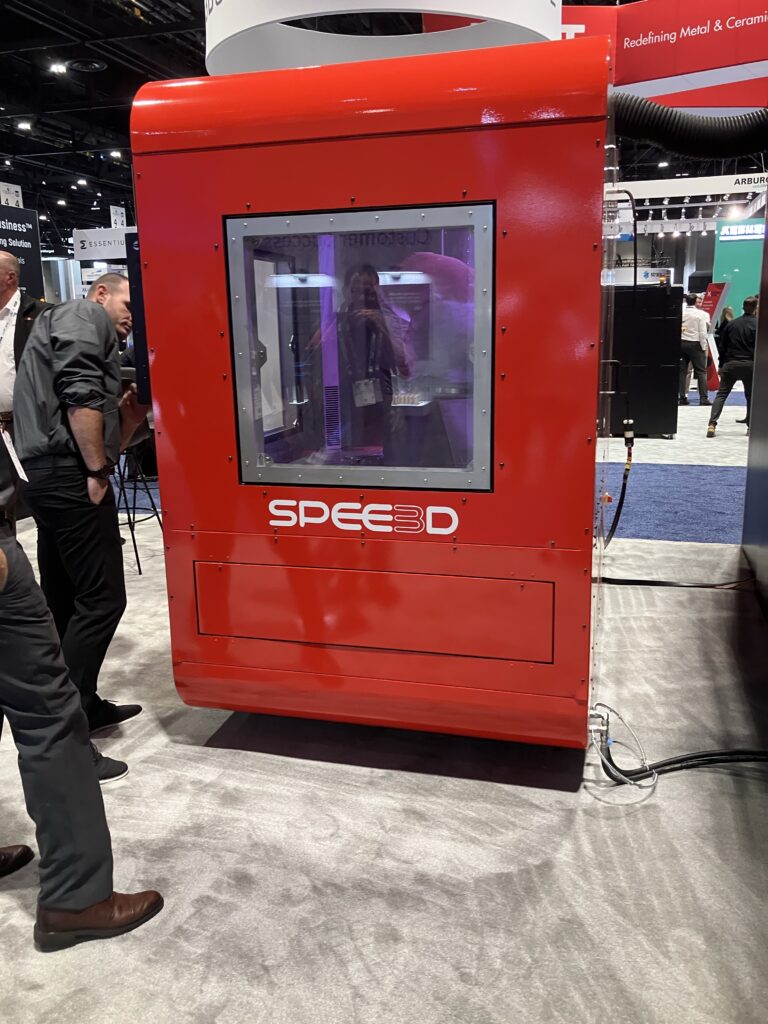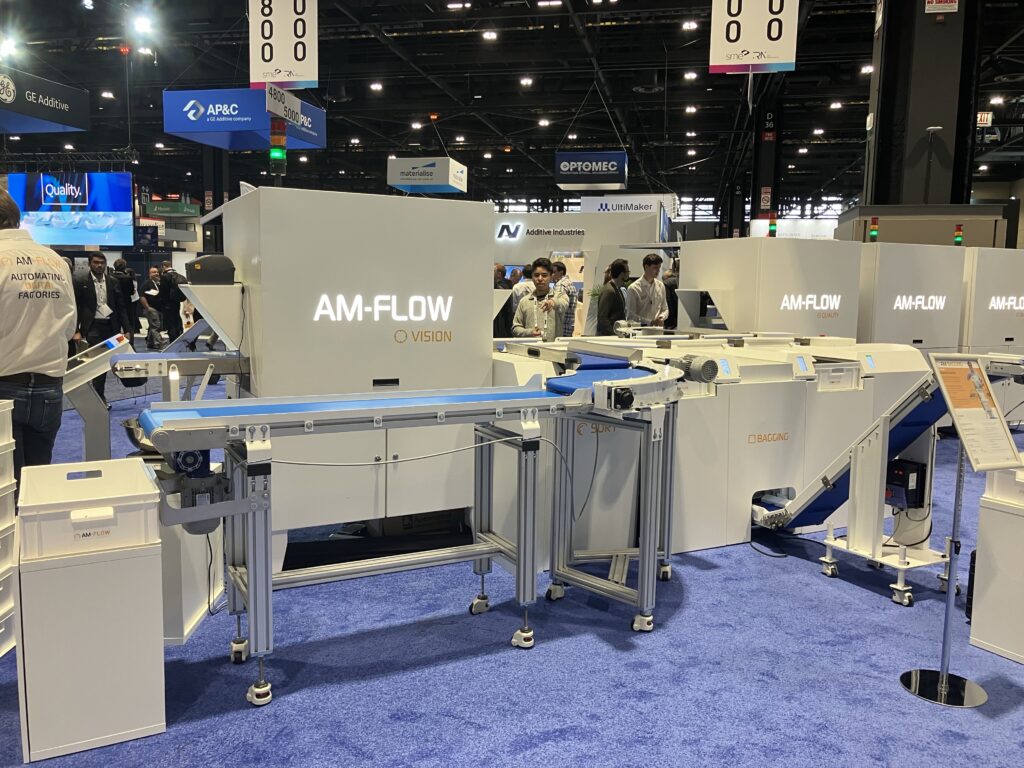Adding Up the Progress: A Year of 3D Printing Evolution on Display at RAPID + TCT 2023
As I was having my traditional panic attack in the Lyft on the way to McCormick Place, I realized something: technically, it hadn’t even been a full year since last year’s RAPID + TCT conference in Detroit. The 2022 event took place May 17-19, whereas this year it was May 2-4.
This detail isn’t very interesting in itself, but it should be quite striking for anyone who has followed the additive manufacturing (AM) sector’s progress since around June 2022. Reflect on all the many developments over that time period, and consider that they have all happened in well under a year.
Now, all of the industry’s advancements and growth weren’t immediately palpable just by walking around the exhibit floor. (This is especially true given the eerie aesthetic similarity of the interiors of all conference halls.) Again, to see exactly what — and exactly how much — has changed, you’d have to have followed 3D printing news over the second half of 2022, and most of the first half of 2023.
And you had to talk to the people working in the industry. 3DPrint.com editor-in-chief Michael Molitch-Hou has already provided an excellent example of that in this synopsis of the event, which describes the fully-fledged entrance of AM into the broader manufacturing economy. That central theme of Mike’s article was affirmed, as well, by a discussion I had with Ross Adams and Sam Manning, Markforged’s business development manager and PR manager, respectively.

No matter who you talked to, all the major themes driving the industry’s momentum throughout the last year seemed to inevitably, and organically, pop up. As I wrote in a post about 2022’s event, one of the big takeaways was that more or less everyone from every company was on-message about supply chain resilience. It was impressive cohesiveness, however much it may have also felt like the result of a heroic effort in PR coaching.
This year, the major theme on everyone’s mind may have still been supply chain resilience, but it was far less necessary for that specifically to be spelled out. Instead, it was more likely to be already embedded in whatever the narrower topic of discussion was, illustrating the extent to which everyone in the industry has internalized the concept, and the pains that companies have gone to in order to organize around that objective.
For instance, ADDiTEC, which is perhaps most active in the aerospace/defense market, nonetheless made a point to display parts from multiple different energy industries, including nuclear and wind. When I mentioned this in my conversation with the company’s application engineer, Louis DeMola, he smiled cheerfully and then basically left it at that. Then we talked about how quickly the EV market is growing. It didn’t even really need to be said why a company would choose to emphasize its activity in the world of energy at this point in history, then why that was important in terms of supply chain resilience, and why that was in turn a problem that could be solved by 3D printing, etc.

That is a perfect example of the subtle but palpable difference in the mood this year. Last year, the environment still had the feel of an industry that was anxiously hoping that it was about to take off. This year, the mood was much calmer, with a cautious but optimistic sense in the air that the industry is indeed taking off. One obvious explanation for that might be that in May of last year, everyone was certain that the economy was on the brink of plunging into a recession. In May, 2023, the economy might still be about to enter a recession, but everyone has made it through a year of fearing that and survived.
Regarding a company like ADDiTEC, there is reason to be optimistic, given the relative strength of the aerospace/defense market right now. Moreover, this represents a gamble that paid off for the company. When I asked DeMola why ADDiTEC moved its headquarters from Las Vegas to Florida, it turns out there was a very straightforward answer: “To be closer to the aerospace industry!”

One compelling reason to bet on 3D printing is that companies in the industry have this sort of strategic vision, which perhaps isn’t surprising for an industry comprised largely of engineers. Along those same lines, Julie Beck, the marketing director at SPEE3D, pointed me to an article that the company’s Chief Technology Officer, Steven Camilleri, co-authored for Metal AM magazine.
One of the things that the article argues, as Beck explained, is that the sheer number of different technologies with different names, all under the heading of AM, can be off-putting for new adopters. This, said Beck, can also make it harder for new workers entering the workforce — another major theme all throughout the last year. As Beck bluntly pointed out, “No one outside of additive calls it additive, and it confuses people.” SPEE3D contributed to making things less confusing for attendees by printing parts on-site with its LightSPEE3D cold spray printer.

Standardization, another evergreen theme for the AM sector and especially important as it enters its scale-up phase, was on display in the partnership between AM-Flow and AMT Technologies. Alyssa Welch of AMT and Patricia van der Voort of AM-Flow showed me how the two companies integrate their platforms to help customers automate their workflows. Although van der Voort said there is still a ways to go in terms of fully automating AM end-product packaging, she also emphasized that largely because of standardization of parts, there has been tremendous progress in the last few years alone.
Andreas Keck and Martin Neff from ARBURGadditive gave me some insight into the theme of legacy brands from overseas starting AM operations in the US. These types of relationships are only sure to proliferate as the industry continues to expand. Keck pointed out, though, that even though ARBURG, which has a century-long history in the machining industry, and also has major injection molding operations, it has to work just as hard as any other to succeed in 3D printing. Companies can’t expect to rest on their laurels. The technology has to live and die on its own merits.
If there is a major theme that emerged at RAPID, itself, I think it is that as a whole, that is what is now happening in the 3D printing industry: the technology is speaking for itself. As Ross Adams at Markforged told me at the end of our conversation, “It’s taken 40 years to get to where you are today, but when you talk to people who have been in the industry for that long, they say something’s different this time.”
Subscribe to Our Email Newsletter
Stay up-to-date on all the latest news from the 3D printing industry and receive information and offers from third party vendors.
Print Services
Upload your 3D Models and get them printed quickly and efficiently.
You May Also Like
AMT Shakes Up 3D Printing Market with Affordable, High-Performance Post-Processing Consumables
Additive Manufacturing Technologies (AMT), a global leader in automated 3D printing post-processing, is launching a new line of consumables that promises to significantly reduce operational costs for additive manufacturing users....
The Bambu Lab 3D Printing Platform… or Trapdoor?
Bambu Lab began as a completely closed 3D printing system, where the printer, software, and materials all functioned well but were exclusively from the company itself. This approach mirrored Formlabs,...
2025 Renault 5 E-Tech Electric Is Latest Car with 3D Printed Accessories
Due to the required numbers, additive manufacturing (AM) has struggled to make significant inroads into vehicle interiors in meaningful numbers—at least as far as public knowledge is concerned. Typically an...
BMW Completes Project to Automate Plastic 3D Printing
After a three-year journey to efficiently scale polymer 3D printed part production, the POLYLINE project has concluded. This endeavor, headquartered at BMW’s Additive Manufacturing Campus, pooled the expertise of EOS,...






























